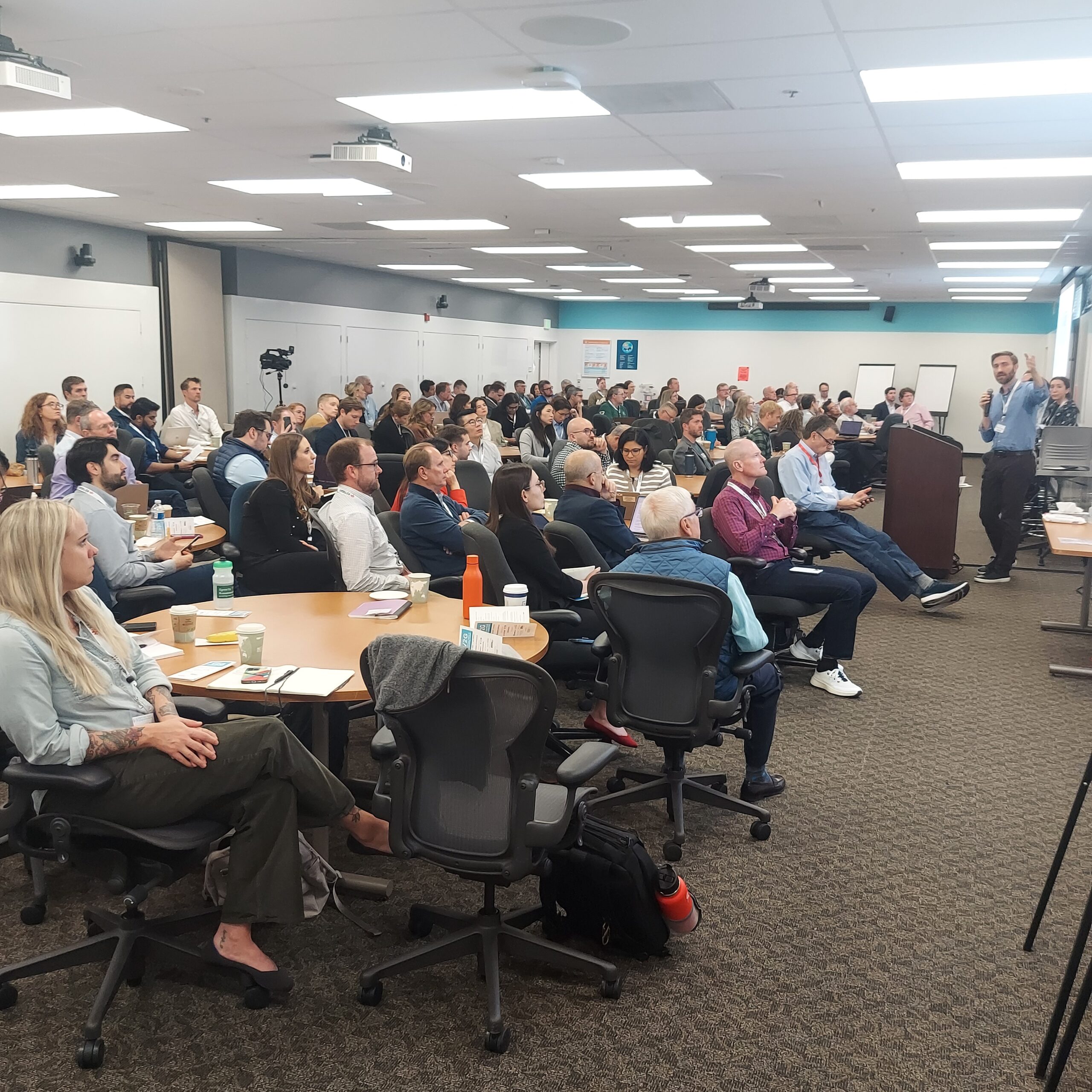
⚡ Welcome to V2G News Volume 1, Issue 5! In a past article, we traced the growth of rooftop solar to understand what lessons might help V2G scale. In this issue, we consider the flip side: what resistance from utilities might look like, and how the V2G community can prepare and respond.
We also preview the upcoming V2G Forum in Detroit, where leaders from across the industry will discuss how EVs can serve as flexible grid resources at scale. And in the headlines, Nissan’s new V2G pilot with ChargeScape and Silicon Valley Power stands out for tackling one of the fastest-growing load challenges—AI-driven data centers—by using EV batteries to feed power back to the grid 🔋.

V2G Insights
Will V2G Face the Same Utility Playbook that Challenged Rooftop Solar?

V2G today feels much like rooftop solar two decades ago — full of potential but not yet mainstream. In Scaling V2G: Lessons from Distributed Solar, V2G News looked at the policies and strategies that fueled solar’s growth. This piece picks up the thread by asking whether utilities will run the same playbook that many critics say was used to challenge rooftop solar — and how V2G can be ready this time.
In 2021, the Frontier Group and Environment America released a report with a provocative title: Blocking Rooftop Solar. The document alleged that utilities across the U.S. systematically undermined policies that supported residential solar adoption. According to the authors, the tactics ranged from lobbying and making political contributions to more technical measures, such as imposing high fixed charges or pressuring regulators to weaken net-metering rules.
The report argued that these actions weren’t isolated incidents but reflected a coordinated strategy to slow a technology that threatened a business model built on centralized generation and steady capital investment. Examples included a failed Florida ballot measure that would have inserted barriers into the state constitution, high demand charges in Kansas that discouraged new solar adopters, and California proposals for nation-leading fixed fees on solar households. The report’s recommendations urged policymakers to resist rollbacks, consider full system benefits, and avoid discriminatory charges.
But Was It Accurate?
It’s fair to ask whether the narrative was as clear-cut as presented. Utilities often defended their positions by pointing to cost-shift concerns—arguing that solar households avoided paying their “fair share” of grid upkeep. Critics of the report note that it painted with a broad brush, downplaying legitimate debates about equitably allocating costs and benefits in a changing grid. Whether one sees a corporate protection play or an argument over fair pricing, the rooftop solar story shows how disruptive technologies can clash with entrenched models.

V2G Intelligence
The Premier U.S. V2G Conference Is Around the Corner

The 6th V2G Business, Policy & Technology Forum will take place October 21-23, 2025 at the American Center for Mobility in Detroit (Ypsilanti Township), Michigan. The fall edition of the Forum is again being staged to bring together the leading minds and stakeholders in the vehicle-to-grid (V2G) ecosystem in the U.S.
Shaping the Future of V2G Standards, Policy & Strategy
The V2G Forum, now in its sixth iteration, has become the go-to event for utilities, EV manufacturers, charging infrastructure developers, regulators, standards bodies, fleet managers, and consultants focused on vehicle-grid integration.
I’ve had the pleasure of participating in four of the past Forums—as a panelist, moderator, and program committee member—and have seen firsthand its unique mix of deep technical content, policy debate, and networking. This fall’s Detroit conference promises more of the same, with heightened emphasis on standardization and interoperability.
This will be only the second time that the Forum features live, standards-based demonstrations of V2G systems, leveraging a live interconnection with the DTE Energy grid. These demonstrations offer a rare opportunity to see real-world V2G technologies—EV and charger hardware, communication stacks, interconnection behavior, and grid interaction protocols—in action.

V2G Finds
Nissan Launches New V2G Pilot with Partners & Declares V2G Key to EV Value
Nissan and ChargeScape have launched a groundbreaking vehicle-to-grid (V2G) pilot with Silicon Valley Power that stands out for its direct focus on meeting the electricity demands of the region’s booming data center industry. Using Fermata Energy’s bidirectional chargers and Nissan EV batteries, the project will feed stored energy back into the grid during peak strain, coordinated through ChargeScape and market partner Leap as part of a broader California virtual power plant. What makes this pilot unique is its alignment of EV grid services with one of the most urgent new load challenges—AI-driven data center growth—while also rewarding EV drivers for their participation. By linking utility needs, cutting-edge technology, and customer incentives, the initiative highlights how V2G can become a practical tool for grid reliability and affordability at scale.
In related news, Nissan GB’s managing director James Taylor emphasized that V2G is central to strengthening the EV value proposition. Speaking at the EV Summit in the UK, he noted that V2G can transform the car “from just mobility to a much greater asset,” with the potential to offset charging costs, insurance, and more. This perspective reinforces Nissan’s long-term strategy to position V2G as a defining feature of its EV lineup, underscoring the company’s commitment to advancing both customer value and grid integration.
9/9/2025 & 9/19/2025
Enphase to Bring Bidirectional EV Charger to Market Next Year
Enphase Energy, a global leader in solar microinverters and home energy systems, has announced plans to launch its first bidirectional EV charger in 2026 — a move that marks a major shift in the V2G and V2H space. The new IQ Bidirectional EV Charger will enable homeowners to charge their EVs, power their homes during outages, and export energy back to the grid, all managed through the Enphase app. Designed for simplicity and flexibility, the system pairs with the IQ Meter Collar for easy installation and can expand into a full home energy ecosystem with Enphase solar and batteries. Key features include up to 11.5 kW of bidirectional DC power, black start capability for outages, AI-driven energy optimization, and support for emerging global standards such as ISO 15118-20 and IEEE 1547.
This development is particularly significant because Enphase has long been a dominant player in the solar inverter market, and its entry into bidirectional charging signals that V2G and V2H are moving into the mainstream of distributed energy solutions. By integrating EVs directly into its established solar-plus-storage ecosystem, Enphase is poised to accelerate adoption, provide homeowners with greater energy resilience, and strengthen the value proposition for EV-grid integration worldwide.
9/9/2025
WeaveGrid Secures LG Ventures Investment to Scale Intelligent EV-Grid Platform
WeaveGrid has landed a strategic investment from LG Technology Ventures, underscoring the growing importance of intelligent software in unlocking EV batteries as dynamic grid assets. By combining LG’s energy storage expertise with WeaveGrid’s AI-driven charging orchestration tools, the partnership highlights how software platforms are becoming essential to scaling managed charging and vehicle-to-grid (V2G) services. Backed by automakers including Toyota, Hyundai, and Kia, WeaveGrid is positioning itself as a key player at the intersection of automotive and energy, where the ability to manage charging securely, deliver grid services, and enhance the customer experience is becoming as critical as the hardware itself—an investment signal that the digital infrastructure to support V2G at scale is rapidly taking shape.
9/18/2025
Germany Moves to Put V2G on Equal Footing with Stationary Storage
Germany’s Federal Network Agency has proposed new rules that would, for the first time, treat bidirectional EV charging the same as stationary battery storage. The draft framework (MiSpeL) would give V2G the same grid feed-in rights and remuneration schemes as home batteries—a policy milestone that finally places mobile storage on a level playing field with stationary systems. This shift is critical: without equal treatment, EVs have been blocked from participating fully in energy markets despite offering the same flexibility benefits. By aligning the rules, Germany is setting the stage for EVs to become mainstream storage assets—soaking up excess renewable power and discharging during shortages—while signaling a path other countries could follow.
9/22/2025
BMW and E.ON Launch First Commercial V2G Offering in Germany
BMW Group and E.ON, one of Europe’s largest electric utilities, have introduced Germany’s first commercial vehicle-to-grid (V2G) service for private customers, debuting with the new BMW iX3 and expanding to other models over time. Using the BMW Wallbox Professional and a tailored V2G electricity tariff from E.ON, customers can feed energy from their EV batteries back into the grid while also powering homes and devices. This collaboration shows how automakers and utilities are working together to turn EVs into active energy resources, creating both customer value and system benefits. It also marks another step in Europe’s leadership on V2G adoption—an important trend V2G News has been tracking closely—as commercial offerings begin to move from pilot projects into the mainstream market.
9/10/2025
CEC Backs Curbside Bidirectional Charging Pilot with $1.1M Grant
The California Energy Commission has awarded it’s electric $1.1 million to pilot curbside bidirectional EV charging, a technology that allows parked vehicles to send power back to the grid as well as draw from it. While still an emerging use case, curbside V2G could broaden access to grid services for drivers without home charging, particularly in dense urban areas. In partnership with UC Berkeley and the University of Delaware, the project will test new hardware and communication standards, including the J3068 Active Cable, with an eye toward reliable operation and equitable participation. If successful, the initiative could complement other V2G applications, offering another pathway for EVs to contribute to grid resilience and efficiency while expanding charging options for communities that need them most.
9/16/2025